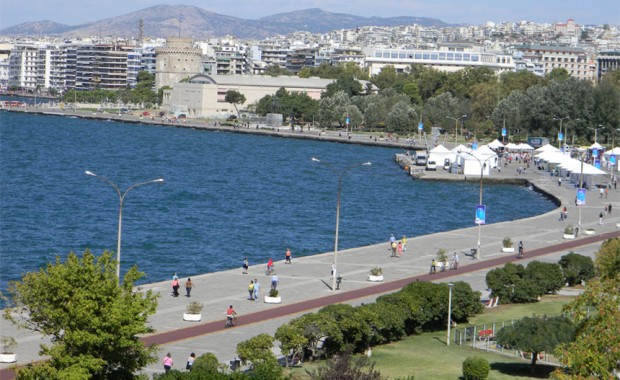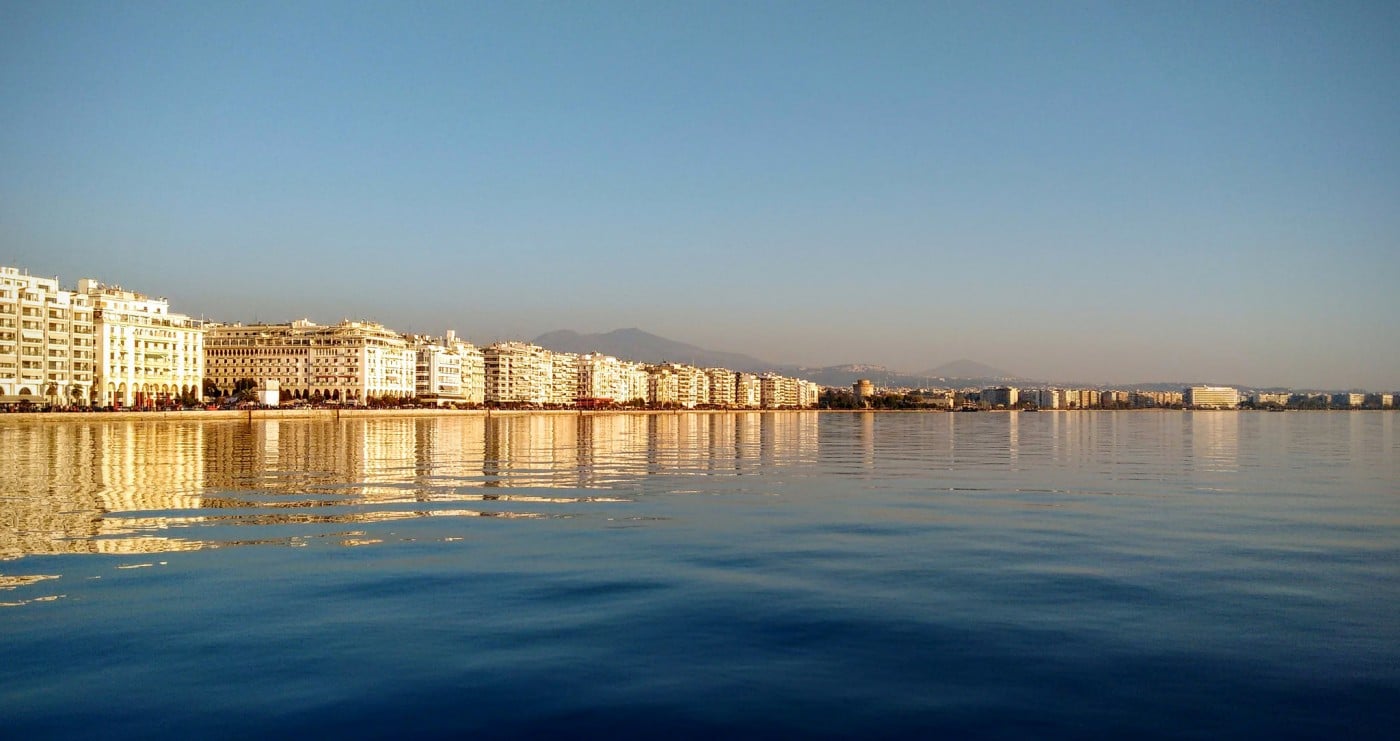[wide] [/wide]
[/wide]
If Athens is Greece’s yin, then Thessaloniki is its yang. Often overshadowed by the beauty and popularity of the capital, Thessaloniki, the second city, is smaller than its big sister but its laid back vibe is a blank canvas for the equal parts of history and culture that make it a vibrant urban landscape. There is so much to experience and discover here which is why the Ministry of Culture and Tourism has classified it (the) “Cultural Crossroads” of Greece.
[photomosaic columns=”4 “width=”400″ id=”1956″]
The town’s complex history can be traced through many of the ancient sites still surviving today in the city center. The symbolic landmark is the White Tower (Lefkos Pyrgos), sitting stately on the harbor, and a gateway to the town’s culture. While it’s not actually white, the imposing structure is visible from many vantage points and its’ positioning next to the beautiful waterfront promenade makes it a conductor of sorts for the city’s lifeline. We stayed at the elegant Macedonia Palace Hotel which occupies a prominent piece of the promenade pie and could watch the hubbub from our balcony – men walking arm in arm with women and other men (platonically of course – think, the land of Plato), cyclists, horse drawn buggies and even a crazy orange tourist train that announces little known facts about the city while riding. On the other side of the White Tower a little further down the harbor are the many cafes where day and night you’ll find the town’s trendy urbanites gathering to have a Greek coffee or a drink or two. Nearby are the main squares of Platia Eleftherias and Platia Aristotelous, both on the waterfront as well and alive with activity.
Thessaloniki has numerous churches, Byzantine and Roman monuments and many of these can be viewed above in my photo essay. What’s unique about these monuments is that they all blend seamlessly into one another and the modern city almost clusters around them. You can walk down an ordinary street, turn a corner and be standing in front of a ruin or ancient church. It startles you a bit. In Athens the ancient monuments tend to be localized as tourist areas whereas here they are integrated into the city’s geography.
Every visitor should see the Agia Sophia, which is strangely identical to its sister church located in Istanbul with the same name and the Kamara, which is the arch of triumph that Roman general Galerius constructed to celebrate his victory against the Persians in the 3rd century AD. Also must sees are the ruins from the Roman Era – the Agora and the Rotunda (which was both a Mausoleum for Galerius and a Turkish mosque during the Ottoman Empire). The Roman, Byzantine and Ottoman periods of Thessaloniki have left their indelible stamps on everything and as a result the city is now on Unesco’s list of World Heritage sights.
Another interesting cultural attraction is the Museum of Ataturk. This founder of modern Turkey was born in Thessaloniki and his house is now a historical museum. You’ll need your passport to enter it because today it also functions as the Consulate of Turkey. The house and garden remains exactly as it was during Ataturk’s time and it’s a very tranquil spot to spend an hour before heading to tour two neighborhoods nearby that I think are the most interesting and shouldn’t be missed.
The first is the Ano Poli (“upper town”) which is the walled Old Town that includes the Kastra or castle. Located high in the hills overlooking the whole city it is the original old quarter and is a beautiful area to take a picturesque walk and as it has the best view, it’s a good idea to have lunch there. There are many outdoor cafes where you can sit and relax after the rigorous climb. Explore the Kastra or wander the winding streets to discover the ins and outs of this part of the city.
The second neighborhood is Ladadika, another old quarter with narrow, paved streets and neoclassical buildings. Once the Jewish quarter, it’s worth a trip both during the day and at night. While still undergoing major gentrification, museums sit side by side with the best restaurants and abandoned buildings and at night the streets come alive with trendy nightclubs. We had Sunday brunch there at Kitchen Club and it clearly was the place to be. The music was hot and every cool Thessalonikian was there. While eating a meze platter and having a bloody Mary, we watched the port do its thing. After lunch we headed to the nearby Museum of Photography and the Museum of Art, both small enough to enjoy in one afternoon.
Thessaloniki may be called Greece’s second city but it was obvious that it really is the cultural capital. This year the Ministry of Culture and Tourism launched a program called “Thessaloniki Cultural Crossroads”, where every year beginning with 2011, Thessaloniki will play host to another culture. The Arabic world and Israel (Middle East) are first to be represented, southeastern Europe in 2012, China in 2013, Russia in 2014 and the U.S. in 2015. So, finally Thessaloniki is being acknowledged for its importance not only to Greece but also the rest of the world.

